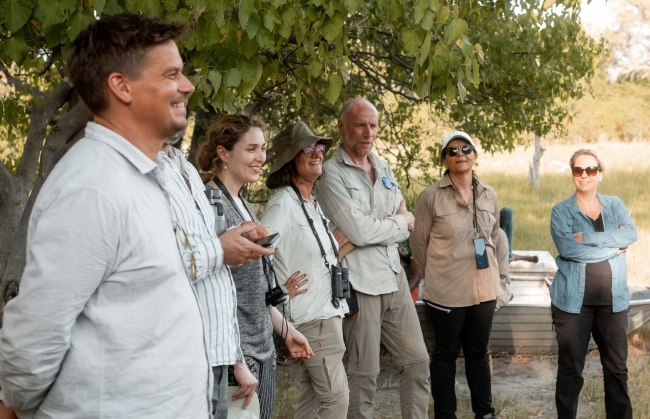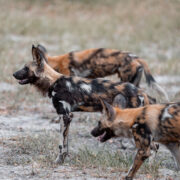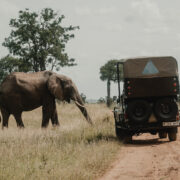A common term Africans use for overseas travellers is “swallows.” This is because many travellers “fly south for the winter” to escape the cold and enjoy summer in the southern hemisphere – mimicking the migration of the birds with the same name. While people flock to Africa for its sunshine and diverse ecosystems, packing for another climate on another continent can be daunting. Even African residents may find themselves surprised by the differing climates within neighbouring countries. It’s one of the delights to be surrounded by such diversity, but for the unprepared, it can be difficult to acclimate.
So here is a lookbook, filled with tips and tricks for being and feeling comfortable on an African tour.

Fabric is Everything
The most understated piece of advice is being careful about your choice in fabric. This can make or break your trip’s wardrobe.
If you aren’t used to the heat, there are two factors that come into play when picking fabric: breathability, moisture retention and thickness. In terms of make-up, there are two types of fabric that make a massive difference to sweating and allowing airflow. Those two would be cotton and linen. These are light, breathable fabrics and allow your body to naturally regulate without getting completely soaked in minutes. You get looser and lighter weaves of these fabrics, which makes them fantastic for layering to avoid sunburn and not sacrifice coolness. Thicker or brushed cotton can be a lifesaver during the night, when temperatures can plummet in the evening, especially in hot regions like Namibia.
Avoid polyester – it not only traps heat and sweat but also smells. There are exceptions, like rain jackets and leggings for hiking or walks; however, poly t-shirts and even sleeveless tops will not help your body regulate its temperature like the previously mentioned fabrics. Wool is also an exceptional fabric for the cold, as it insulates very well and can protect against wind during dusk’s hours.
Weather Me This
One of the reliable things about the weather in Africa is its unreliability.
Declare your weather app a loose guide to a day, and do not necessarily pack just according to the weather forecast. As odd as it may be, temperature and weather fluctuations are a common occurrence. Countries that are known for heat surges can also get shockingly cold, like Namibia, South Africa, Botswana and Lesotho.
So how do you predict what to pack? You look at the seasons and where a country sits around the equator.
Compare your travel dates with the country’s (or countries’) rainfall months. Summers tend to fluctuate between downpours and searing heat, which can be welcoming polarisations but cause humid environments. Uganda and Kenya are known for their humidity due to their abundance of forests and equatorial position. Winters can be a mix, but typically more arid or grassland areas are frequently dry with a chilly bite. When travelling on safari vehicles and driving through national parks towards the evening, the temperature can steeply drop. Autumn and spring temperatures are fairly mild, with colder evenings and nights. However, they do tend to bring a surplus of pollen as trees and flowers shed in the changing seasons.

The Non-Negotiables
Being prepared means avoiding discomfort as much as possible. These are suggestions I would not travel without to ensure an enjoyable trip.
- Lightweight rain jacket: Winter showers are not unheard of, especially if you are travelling between different countries or into the lush, green heart of Kenya or Uganda. Better to bring one than be caught unawares.
- Environmentally friendly washing soap/powder, clothes pegs & line: On trips over 5 days, in the heat, you are more likely to cycle through your clothing faster than expected. It also allows you to wash clothes if there is a complication while travelling.
- Hay fever medication/nose spray: Africa has several areas with high pollen concentration & fine dust. Even locals struggle with hay fever and dry winter air.
- Good Pair of Boots: Three words – good tread, waterproof. Boots allow you to go on adventures, stress-free and fall-free. This is a need if you are travelling in the rainy season. I personally take my trusty hiking boots. Remember to test out your shoes on a walk or two to make sure they’re comfortable too!
- Mosquito & Insect Repellant: Being in the thickets means that insects will be present, and mosquitos can be abundant in wetland areas, so remember to bring this along to avoid dealing with bites.
- Gloves & scarf: This is an understated suggestion. Safari drives can get nippy while travelling, and the wind can dry out your nose and throat. Gloves and scarves always come in handy during these moments.
Other recommended comfort items can be found in our pre-departure booklet. Aside from that list, things like a cushion for bumpy roads when overlanding and a variation of layering options can make the journey more relaxing.



